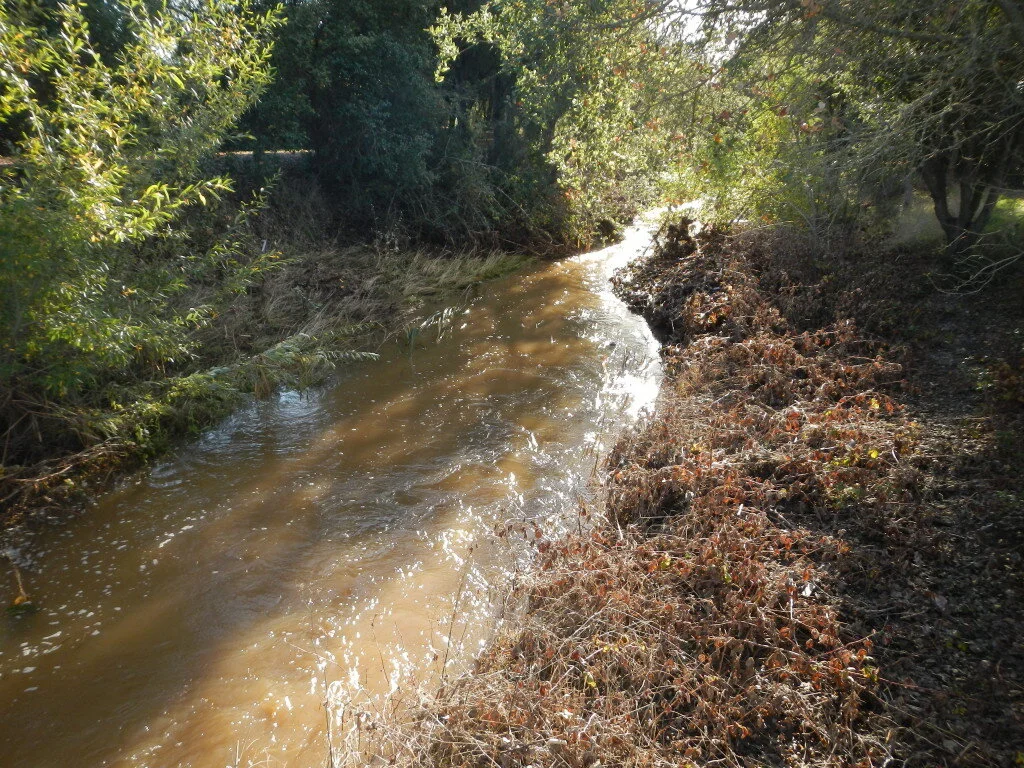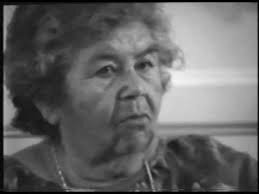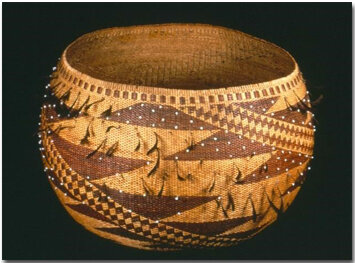Elsie Allen
Pomo basket artist Elsie Allen
Pomo basket artist Elsie Allen left a legacy that crosses cultural boundaries, a gift both long lasting and profound. The high school named for her is reached by crossing a bridge over Colgan Creek, where extensive restoration work is now underway.
Elsie was a world-class basket artist in the Pomo tradition. She and her ancestors in Sonoma County achieved an artistry surpassing that of all the world’s basket-making cultures. This is a phenomenal achievement, and in part attributed to the variety and quality of the materials they could choose from, among the plants they tended for use.
Pomo basket-making
We remember Elsie not only for her skills but her courage. Pomo baskets were traditionally buried in the graves of those who created them. But Elsie’s mother, Annie Burke, asked her daughter to break tradition. Elsie not only kept her mother’s baskets from getting buried in her grave, but helped keep the techniques of Pomo basket-making from getting buried in obscurity. Elsie reached across cultures to teach basket making. When she died, Elsie’s baskets were not buried, either. You can see her baskets and those made by other Pomo artists at the Grace Hudson Museum in Ukiah.Paradise Lost
what would elsie do?
Ask a Pomo basket maker how long it takes to make a basket and the answer will frequently be, “At least a year!”
It takes courage to keep trying. Even after all Elsie’s advocacy work, fewer and fewer Pomo baskets are being made today because the materials are so scarce. Pesticides harm native plants, most of the undeveloped riparian land is private, and Pomo families can no longer harvest from their plant-gathering sites. Many sites are buried under the waters of Lake Sonoma, an engineered lake.
Yet some basket makers persevere. The most basic aspect of basket art work was rooted in the same kind of tasks you might do for Colgan Creek—tending plants. You might even grow a few that Elsie and her ancestors used for baskets: willows and sedges. Anything you do to help restore the health of Colgan Creek contributes to the possible resur-gence of a great art form, on the land from which it first emerged.
Bracken Fern
There is so much preparatory work required, that making the basket itself can be the easiest part. But making a Pomo basket is not easy. Could you tie ten thousand perfect knots with dry plant cuttings? That’s how many perfect knots make up some Pomo baskets. And these baskets were not just for looks, but performed many chores, including holding water without leaking a drop, storing grains, catching fish and transporting infants. Yet these baskets are as beautiful as they are functional—thus earning the world’s admiration.





